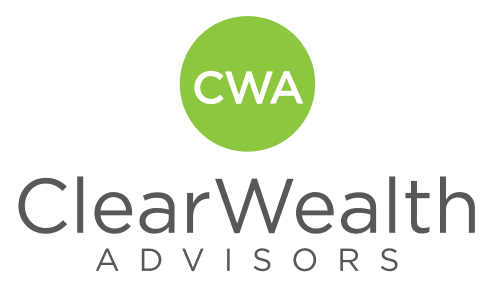There are only a few weeks left in the decade. Milestones like that often make a person reflect. Reflect on where you’ve been and what you hope to accomplish in the coming decade. 10 years is a long time and your financial position can change dramatically over that time frame. Below you’ll find some tax tips that will help you minimize your tax burden. Be sure to capitalize on any of these that apply to you before 2019 comes to a close.
Tax-loss Selling
If you have realized capital gains for any reason – perhaps you had to cash in stock, or had bonuses or stock paid at work through your company group accounts – selling assets with a capital loss selling can be a strategic way to offset those capital gains realized in your non-registered portfolio and reduce the tax owing.
We’ll be in touch if this affects you and needs to be applied to your situation. If you are managing monies self-directed keep this in mind and consider having us take a look at consolidating and managing all your assets for maximum return.
Make Charitable Donations
Making a charitable donation prior to December 31st will result in a tax savings of around 50% of the value of your gift. This is a win-win scenario, where the charity benefits from your donation and you receive a tax-credit.
Make Gifts In-kind
Alternatively, you may want to consider making an in-kind gift of a non-registered stock or stock options to reduce your capital gains tax. Depending on your particular tax scenario this may be preferred to maximize the tax savings. Gifting stock with accrued capital gains to a registered charity or a foundation turns what would otherwise be a taxable event into a tax receipt.
If this tax strategy appeals to you and we haven’t yet discussed a Charitable Giving Program, ask us about it. This program combines immediate tax benefits with the ability to support your favorite charities now and into the future.
Make RRSP Contributions Early
The RRSP contribution deadline is March 2, 2020 for the 2019 tax year. Contributions made as early as possible will maximize tax-deferred growth.
TFSA Considerations
The limit for 2019 for making a TFSA contribution is $6,000. If you are able to, it is a good idea to always maximize this contribution as a way to minimize tax.
If you are planning a TFSA withdrawal in early 2020 – to pay off Christmas debt for example – consider withdrawing the funds by December 31, 2019. That way you don’t have to wait a full calendar year before being able to replenish that amount into your TFSA.
Make RESP Contributions
The federal government provides a Canada Education Savings Grant (CESG) equal to 20% of the first $2,500 of annual RESP contributions per child or $500 annually. If you have room to contribute, we will be in touch to take advantage of this free contribution match.
You can contribute for this year and the one previous to get the grant. There is now a contribution history whereby you must start a RESP by the time your child turns 10 because by the age of 15, you must have contributed $100 the past 4 years to qualify for the grant.
RRSP Withdrawals Under the HBP or LLP
You can withdraw funds from an RSP without tax under the Home Buyers Plan up to $35,000 for first time home buyers and the Life-Long Learning Plan for $20,000. Based on the year you withdraw the funds, you must repay them back in installments. If you plan to withdraw RRSP funds under one of these plans, you can delay repayment by one year if you withdraw funds early in 2020, rather than late in 2019.
Convert Your RRSP at 71
If you turned 71 in 2019, this is your last chance to contribute to your RRSP before converting it into a RRIF. We will be in touch with you if this applies, but we want to be sure we maximize this tax shelter for estate planning.
Contribute to a Registered Disability Savings Plan (RDSP)
If you or your child are eligible for the Disability Tax Credit, you can contribute up to $200,000 to the plan until the beneficiary turns 59, with no annual contribution limits. RDSP contributions are not tax deductible, but earnings and growth within the plan accrue on a tax-deferred basis.
Passive Investment Income for Private Corporations
As of January 1, 2019, the Federal Government introduced a $50,000 threshold for passive, taxable income within a year.
This means your corporation must keep passive income – real estate rental income, Canadian and foreign dividends, interest from investments, etc. – to $50,000 or less if you want to access the full $500,000 small business deduction limit.
The small business tax rate is about 13.5% on the first $500,000 of active business income, and about 26.5% on amounts higher. The small business deduction limit is reduced by $5 for every $1 of investment income above $50,000 and is completely eliminated at $150,000. A company earning more than $150,000 in passive income would have no access to the small business tax rate and would pay the general income rate (26.5% to 31%) on all active business income.
If passive investment income in your corporation is close to, or exceeds, $50,000, you still have time in 2019 to prioritize, plan and make any desired tax-efficient changes. You’ll need to stay below this amount to avoid the reduction for the small business tax rate.
Your Tax Planning Experts
These tips highlight various ways you can act now to benefit from tax savings. But keep in mind that tax planning is a year-round affair. We are constantly keeping abreast of tax saving opportunities for our clients



Recent Comments